Removing Rust from Cast Iron Pans with Household Remedies
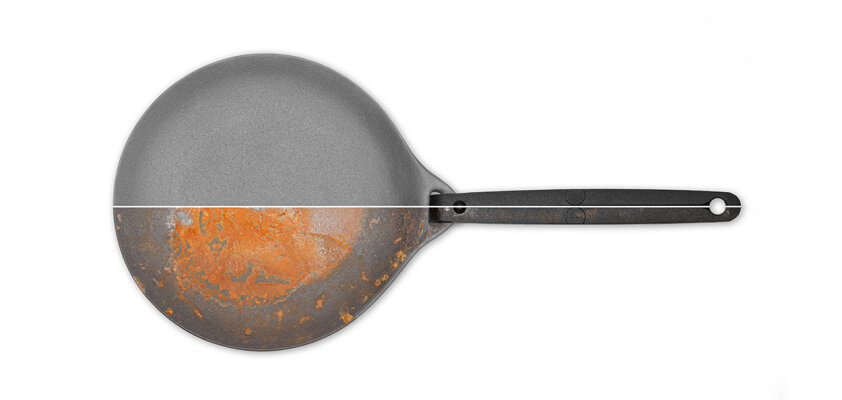
Cast iron pans are an investment for life. Those who enjoy cooking with cast iron appreciate its special properties. When used correctly, cast iron pans practically have an unlimited lifespan and are a loyal companion in both hobby and professional kitchens for decades.
Due to their material composition, it is possible that, in connection with moisture or acidic foods, rusty spots or so-called flash rust may appear on the pan. Rust is a chemical reaction that occurs when iron comes into contact with oxygen and water and oxidizes. According to the Federal Institute for Risk Assessment (BfR), rust does not pose a health risk. Nevertheless, most people feel the need to remove it from their pan or pot.
What have I done wrong if my iron pan rusts?
In most cases, rust occurs because the pan is not properly dried after washing. Cast iron has pores that can absorb water. Therefore, simply drying cast iron pans or pots is not sufficient. They need to be heated to allow the water in the pores to evaporate completely. Storage can also be a factor. Cast iron cookware should be stored in places with sufficient air circulation and low humidity. If in doubt about whether the item is completely dry, it's better not to close the lid.
Note: In our case, we intentionally sprayed the pan with acid and left it outside overnight.
How can I remove rust from my iron pan?
The effort required to remove rust from the cast iron pan depends on the extent of the rust. It is strongly advised to avoid using chemical cleaning agents, as they can also penetrate the pores of the cast iron. Cleaning with natural household remedies is also environmentally friendly.
The sooner you notice the rusty spots on your pan, the easier they are to eliminate. In our step-by-step guide, we use vegetable oil for rust removal. Rapeseed, olive, or sunflower oil are equally suitable for this purpose.
How to remove stubborn rust from a cast iron pan with household remedies
Step 1: Regardless of whether there is only light surface rust or more stubborn rust in the cast iron pan, the first cleaning step is to wash the pan thoroughly. All you need is warm water, a good brush, and some patience. You can brush quite intensively to remove loose and easily detachable rust. Please do not use dish soap. All soaps break down fats, which is counterproductive for a well-maintained cast iron pan with an intact oil-cast iron bond. For brushes, we recommend natural materials instead of plastic, and the bristles can be slightly stiffer than usual, as is the case with our Kamenoko scrub brush.
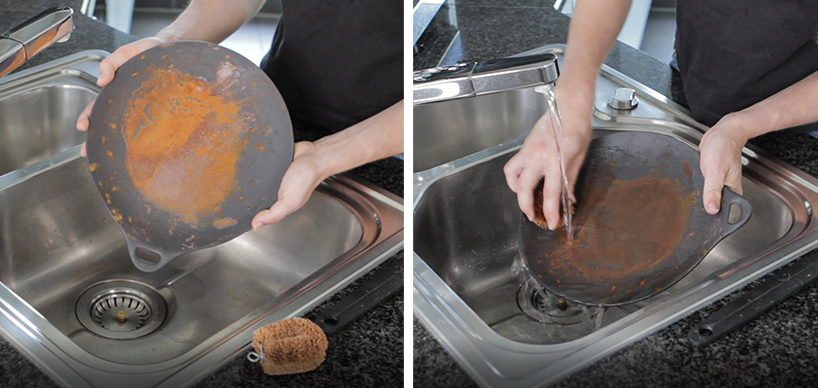
Step 2: Dry the cast iron pan slightly, then heat it on your stove or in the oven. The heat will cause any remaining water on the surface and in the pores to evaporate.
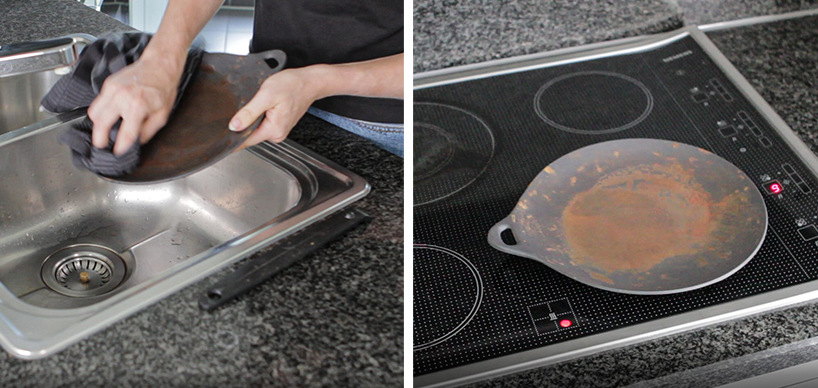
Step 3: Spread a sufficient amount of oil in the pan, especially on the rusty areas, and vigorously massage the oil with the scrub brush. Sufficient, in this case, means that the pan should be well-oiled, but the oil should not be pooling in the pan. Afterward, wash the pan again using the brush and dry it once more by heating it.
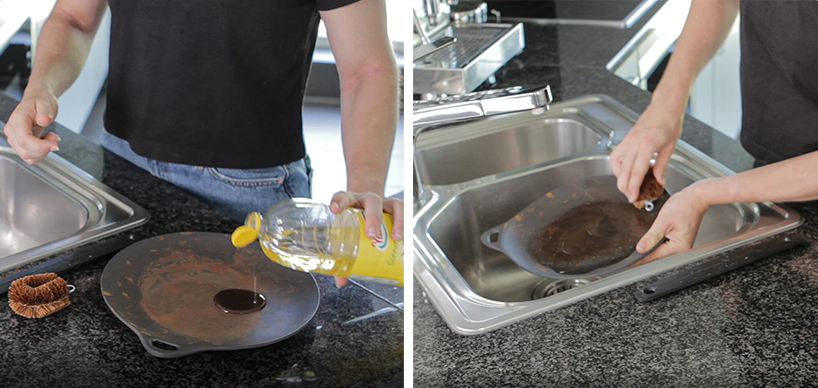
Step 4: Now, it's time for a visual inspection. Are all rust spots and discolorations eliminated? If not, simply repeat Step 3. In our experience, after a maximum of 3 cleaning cycles with oil, the cast iron cookware is in very good condition, and you can use it without any concerns.
Step 5: After such a thorough cleaning, cast iron cookware should be seasoned. In our blog post "Seasoning Cast Iron Pan: Easy Guide," you'll find valuable tips. Alternatively, follow the instructions included with our delivery.
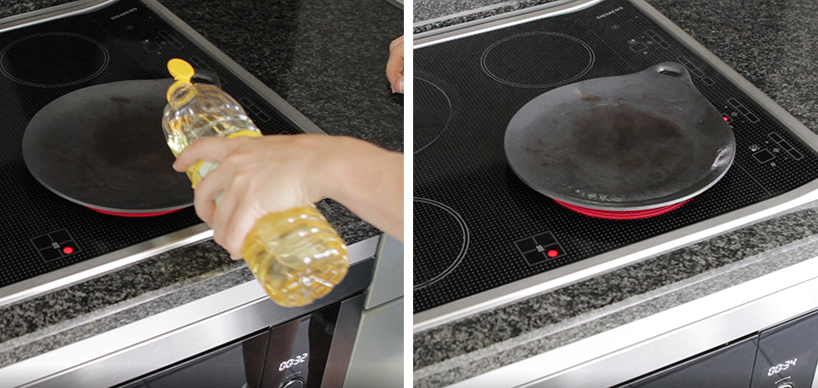
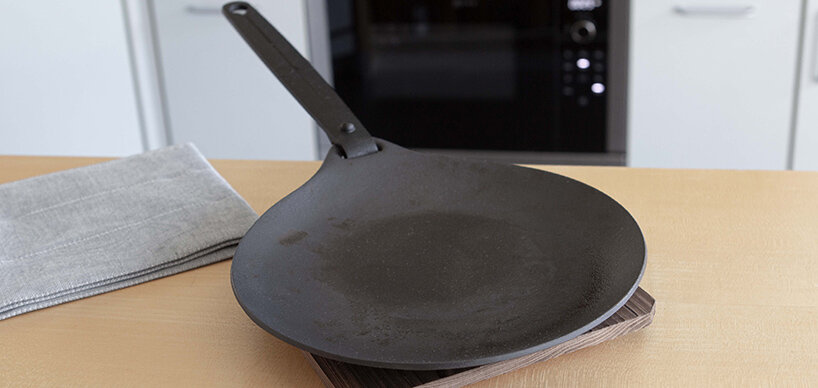
Regardless of the method you use to remove rust from your iron pan, rinse it thoroughly with enough cold water afterward. As mentioned earlier, to prevent rust formation, it's important to dry the entire surface, including the pan's bottom, thoroughly before storing it. Slight brown residues on the cloth after drying are normal, so don't necessarily use your brightest kitchen towel.
By scrubbing off the rust, the natural protective layer, the patina, has likely been slightly damaged or worn off. If your cast iron pan was more heavily discolored, you should reseason it immediately after the cleaning process. We show you how to season a cast iron pan here. The patina not only prevents food from sticking to the frying pan, but it also acts as a natural rust protection. For regular maintenance, we recommend rubbing it with a neutral oil such as sunflower or rapeseed oil.
These care tips should be followed in future
- Clean the iron pan directly after cooking or when it has cooled down. This helps prevent the need to soak the pan for an extended period.
- Cast iron cookware should generally not be placed in the dishwasher but should be hand-washed without the use of harsh cleaners.
- Take adequate time to dry as residual water droplets are responsible for oxidation and the resulting rust.
- Find a dry place for storage for cast iron pans and pots, and do not cover them with a lid or similar.
- If you use your cast iron pans infrequently, you can wrap them in newspaper to protect them from moisture.
- Regular use prevents unnoticed rusting due to the accumulation of moisture.











-from-the-yakiyaki-grill-pan.jpg)




